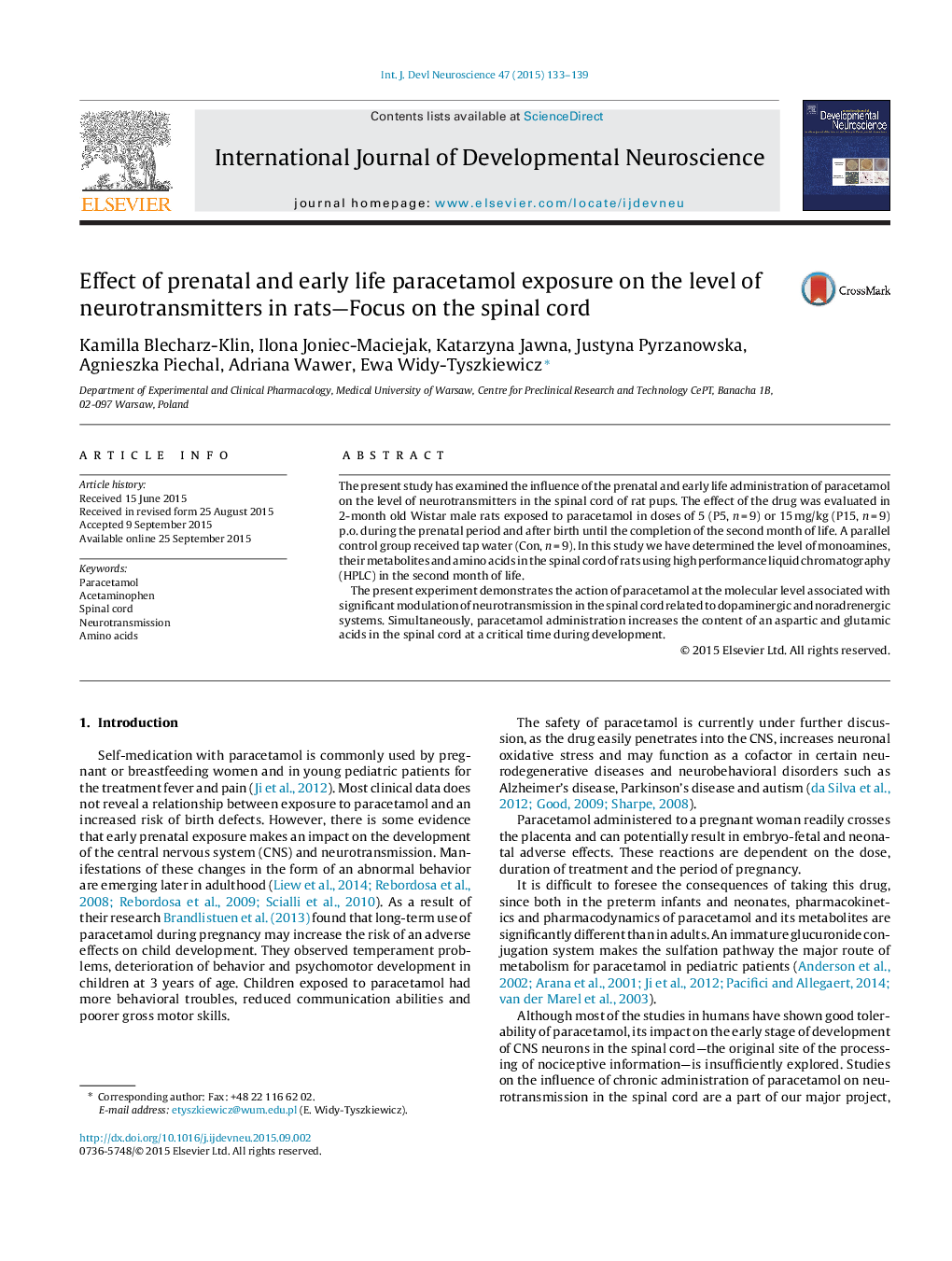| Article ID | Journal | Published Year | Pages | File Type |
|---|---|---|---|---|
| 2785643 | International Journal of Developmental Neuroscience | 2015 | 7 Pages |
•Paracetamol interferes with the profile of neurotransmitters in the spinal cord.•Major changes are related to dopaminergic and noradrenergic neurotransmission.•Gluatmic acid and aspartic acid concentration raised in drug treated groups.
The present study has examined the influence of the prenatal and early life administration of paracetamol on the level of neurotransmitters in the spinal cord of rat pups. The effect of the drug was evaluated in 2-month old Wistar male rats exposed to paracetamol in doses of 5 (P5, n = 9) or 15 mg/kg (P15, n = 9) p.o. during the prenatal period and after birth until the completion of the second month of life. A parallel control group received tap water (Con, n = 9). In this study we have determined the level of monoamines, their metabolites and amino acids in the spinal cord of rats using high performance liquid chromatography (HPLC) in the second month of life.The present experiment demonstrates the action of paracetamol at the molecular level associated with significant modulation of neurotransmission in the spinal cord related to dopaminergic and noradrenergic systems. Simultaneously, paracetamol administration increases the content of an aspartic and glutamic acids in the spinal cord at a critical time during development.
Graphical abstractFigure optionsDownload full-size imageDownload high-quality image (122 K)Download as PowerPoint slide
